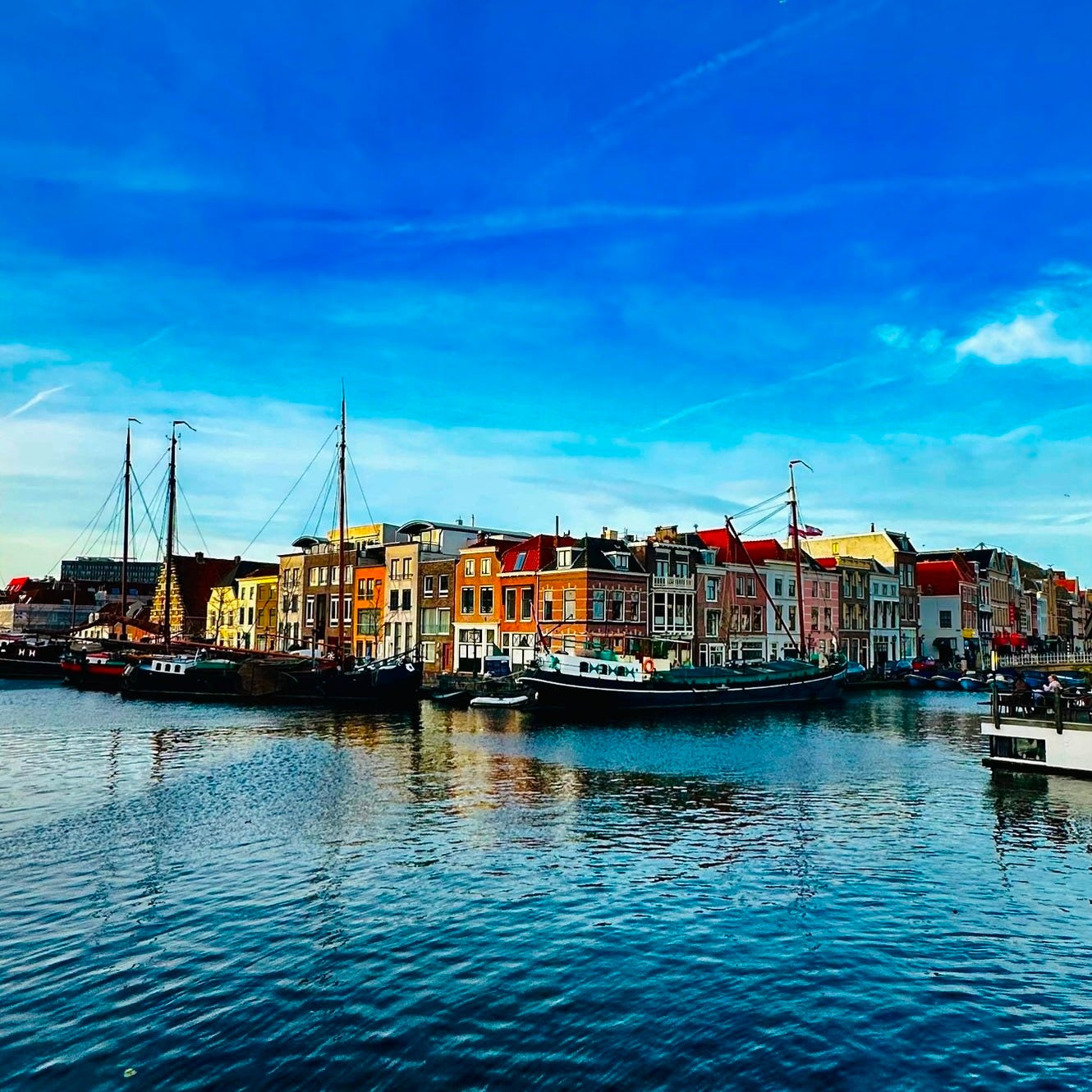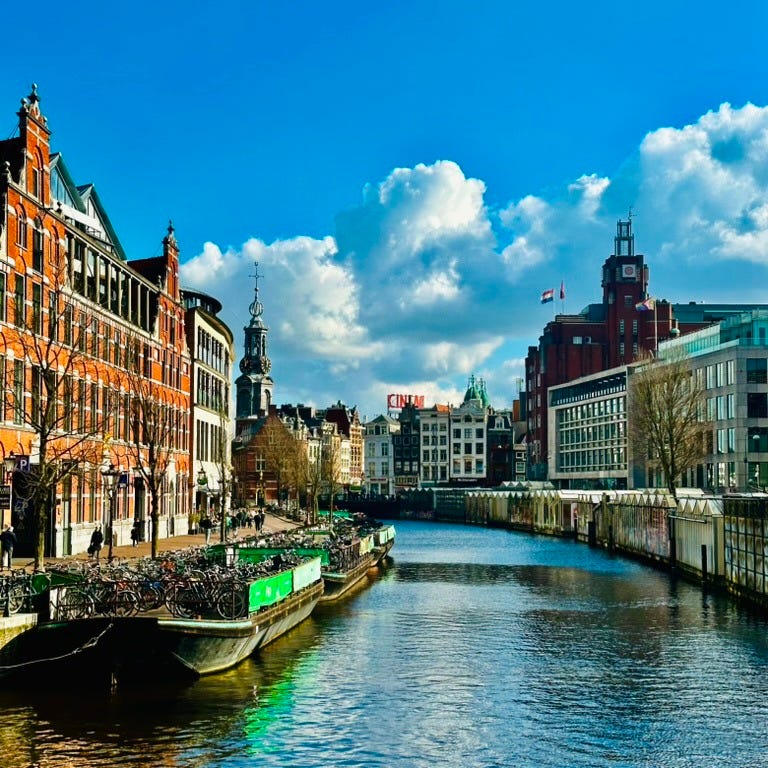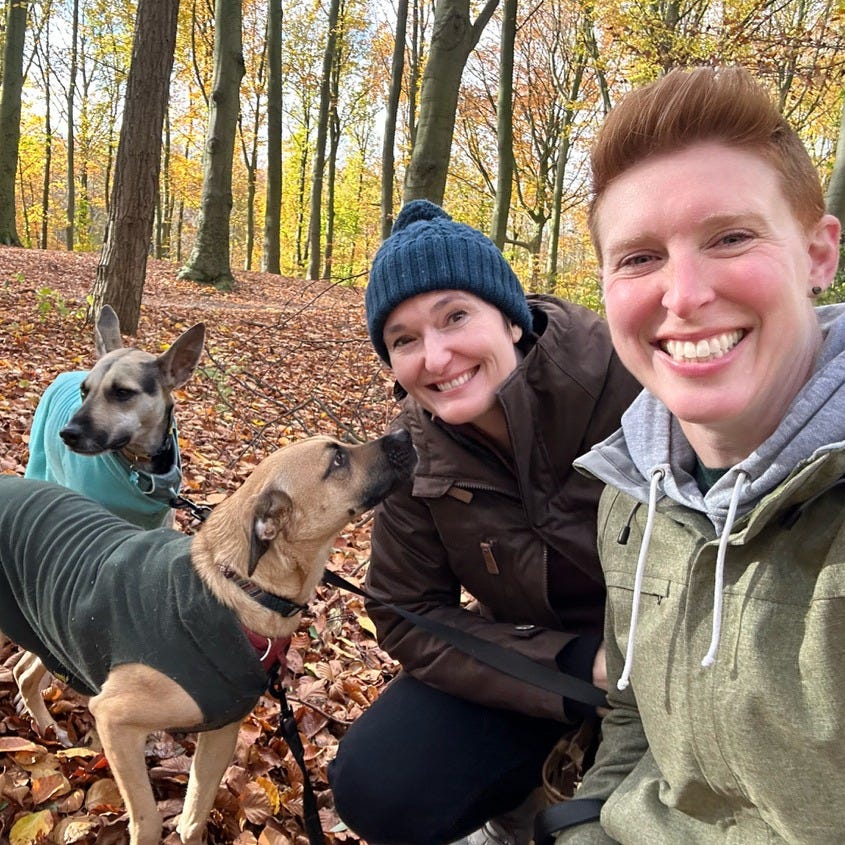How We Actually Moved to Europe
A final post in my leaving academia series.
My inbox has been full of the same question in recent months, asked in a dozen different ways: “How did you and your partner actually move to Europe?” Friends, clients, and colleagues reach out, sometimes out of curiosity, sometimes out of fear. The political chaos in the U.S. has transformed what once lingered beneath the surface into urgent realities for so many of us.
Parents are wondering what it means to raise children in this environment. Trans and queer friends are thinking about safety, stability, and rights that once felt secure—jobs, marriage, and healthcare. The question isn’t just where to live, but how to build a life that feels safe, sustainable, and free.
Before I go further, I need to acknowledge the enormous privilege embedded in what I’m about to discuss. As we see from the political situation in the US, if you are brown and working class, you have far fewer legal avenues to take yourself and your family to a country with more opportunity and safety. If you’re white and middle class, you can move to Europe and call yourself an expat—a word steeped in privilege, far removed from those who risk everything, crossing borders in the back of a pickup truck to build a better life for their families. The immigration pathways I’m describing here require financial resources, educational credentials, and often citizenship privileges that many people simply don’t have access to. I don’t take that lightly.
A year and a half ago, my partner and I traded Texas for the Netherlands. It’s not my usual Publish Not Perish topic, but lately I’ve realized that the practical story of how we made this move might be exactly what some of you need to hear right now.
So here’s the real story—not the idealized version with canals and cobblestones (although I couldn’t resist some photos), but the practical one that required spreadsheets, strategy, and endless deliberation to make it possible. I'll note that I'm primarily discussing moving to Europe because that’s what I know, but some of this may apply to other geographical locations.
Why We Chose the Netherlands
When I left academia, I was already in the process of building my business as an academic writing coach, which meant I needed to live somewhere that would let me work legally as a self-employed person and stay connected to my clients in North America and Europe. Time zones mattered—I wasn’t interested in taking coaching calls at 3 a.m. while pretending to be chipper. My partner’s career mattered too, because our life decisions involve both of us, not just my romanticized vision of writing from a quaint European cafe (although I must say, I still pinch myself every time I do).
We landed on the Netherlands through something called the Dutch-American Friendship Treaty, or DAFT. It’s a work permit for U.S. citizens who want to be self-employed in the Netherlands—you register a business, deposit capital (currently around €4,500), and you are able to legally live and work here. It's a fairly simple visa to obtain, but in order to have it renewed after two years, you must demonstrate that you have built the business.
But here’s the part that made it work for us: my partner could work for a Dutch employer on my DAFT. That was huge. Many “digital nomad” visa setups require both people to be remote or self-employed, which sounds dreamy until you realize that stable local employment with benefits and vacation days might actually be what one of you wants or needs.
Now, I should mention the obvious: academics can absolutely apply for academic jobs in Europe. But let’s be real—the job market isn’t better here. It’s just differently terrible, and most positions require you to speak the local language. There are some exceptions. In countries like the Netherlands, Denmark, and Sweden, many universities advertise English-language academic posts and will hire you without Dutch, Danish, or Swedish at the start—though you’re usually expected to learn the local language over time if you stay.
If you’re not ready to commit to that, or if the academic job market feels like more of the same precarity you’re trying to escape, you’ll need to think creatively about other pathways. (See my previous posts below on leaving academia for ideas on other pathways).
The Questions to Ask Yourself
Before diving into visa types, let’s talk about the logistics that are far from the romantic version of moving abroad.
If you have a partner, their employment situation becomes a critical part of the equation—can they work remotely for a U.S. employer, do they need local work authorization, or are they planning to be self-employed?
If you have kids, you’re adding another layer: what are the schooling options, are there English-language international schools (and can you afford them), and how will a move affect their education and social development?
These aren’t minor details to figure out later; they’re foundational questions that should shape which countries and visa types you even consider.
Digital nomad visas are everywhere right now—Portugal, Spain, Croatia, Greece, Estonia, all promising sunshine and affordable living and the chance to reinvent yourself while working from a beach. For some people, these visas are genuinely perfect. But they’re designed for a specific scenario: remote workers earning income from outside the country, usually for 6–24 months (sometimes renewable).
The critical question for digital nomad visas is whether dependents get work rights. Many digital nomad visas allow family members to come along but don’t grant them authorization to work locally, which is a pretty significant limitation if you’re in a partnership. And if you have kids, you’ll need to research whether the visa gives them access to public schools or if you’re limited to expensive international schools.
Another option worth considering: student visas. Some countries—like Germany, the Netherlands, and Portugal—allow you to apply for work visas after you finish educational programs. If you’ve been considering a degree or professional training anyway, this could be a strategic pathway that gives you time to settle in, learn the language, and build local networks before transitioning to work authorization.
The Question of Language
One reason the Netherlands worked for us is that yes, most people here speak English fluently—like, 90% of the population. I could fumble through bureaucracy and healthcare appointments without needing to speak any Dutch. But let me be clear: “everyone speaks English” is not the same as “I don’t need to learn the language.” If you want to live somewhere deeply rather than float around in an expat bubble, language matters, of course.
In countries like Portugal, Spain, or Greece, you can survive in English in touristy areas and international coworking spaces. But if you want local employment that isn’t just serving other expats, or if you need to navigate healthcare, taxes, or housing without constantly relying on Google Translate, the language becomes significantly less optional.
And if you have kids, language becomes even more critical—do they go to international schools where they’ll be in an English-speaking bubble, or local schools where they’ll need to learn the language quickly? This is ultimately a question about how you want to live and what kind of integration you’re aiming for.
Time Zones Will Make or Break Your Sanity
If you’re planning to work remotely for an employer or freelance, time zones should be one of your first considerations. This was non-negotiable for me. Most of my clients are in North America and Europe, which means living in Central European Time lets me take late-afternoon calls with U.S. clients without turning into a vampire. If we’d moved to Southeast Asia on a digital nomad visa—cheaper, sunnier, full of beaches—I’d be logging on at midnight or 5 a.m. every day. And chronic sleep deprivation was not how I wanted to start this new chapter.
Before you fall in love with a country based on cost of living alone, think about who you’ll actually be working with—your clients, colleagues, or employer. Circle the time zones that allow for overlap during normal working hours, then start looking at visas. Because no amount of affordable rent or perfect weather can make up for living permanently out of sync with the rest of the world.
Start With Your Life, Not With the Ideal
Here are a few more questions as you start pondering the option of leaving the US:
Where do you need the right to work—remote-only or local employment? If you have a partner, what do they need professionally?
If you have kids, what are your educational priorities, and how will a move affect them?
Where are your clients or employer based, and what time zones make that sustainable?
How comfortable are you learning a new language for actual daily life?
Do you want a short-term adventure or a long-term base with a path to permanent residence?
For my partner and me, those answers pointed to the Netherlands via DAFT. Your answers might be completely different. My hope is that instead of starting with “top 10 digital nomad visa” listicles, you start with your actual life, your actual work, your actual family situation and values, and let the immigration pathways follow from there. Because moving countries is hard enough without realizing six months in that you picked a place based on vibes instead of logistics.
Alright, there you have it, folks. That’s my quick and dirty take on how we moved to Europe. I hope you found it enlightening! Feel free to post any questions you have here:










Jenn! Amazing news! Do let me know if you ever pop down to Switzerland!
Love this recap and the deeper dive into the details.
So glad yall made the move!